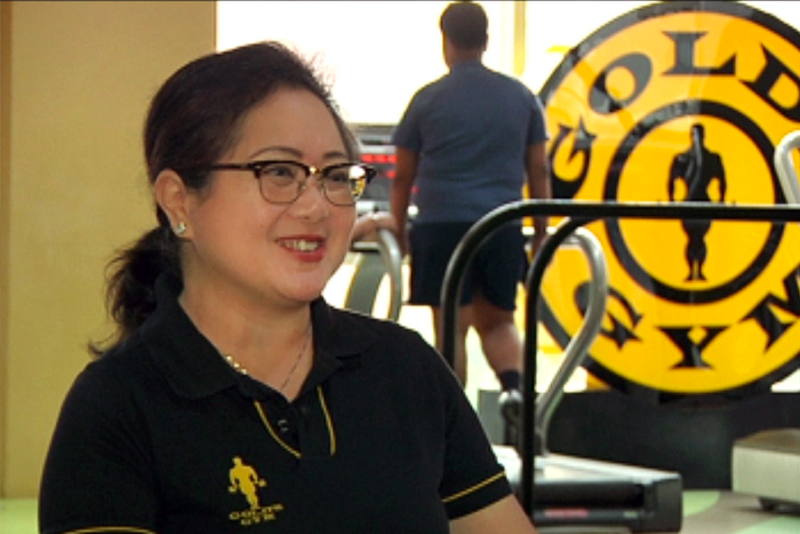Boom times in the business of fitness

Dayrit
MANILA, Philippines — Just who could resist that intoxicating fragrance of hope that rolls around at the onset of each new year? How could one resist that heady tempting whiff of a sweet new start, promising that no matter what happened, things will be better now, things will be great, things will finally be good. And that yes, you will finally lose weight and be fit.
Year after year, Google searches for “physical fitness” peak in January. And year after year, foot traffic in gyms peak right after the detritus of the media noche leftovers are cleaned up and post-holiday regret sets in. Hashtag better me.
“January is one of our peak months,” Mark Ellis, Fitness First Philippines country manager, said. “People coming out of the festive season are all looking to commit to their new year’s resolutions so we see about 25 percent increase in our sales and personal training in January.”
On top of the cyclical first quarter growth spurt, gyms today are also having more and more customers as the middle class expands along with spending power.
Jeff Lo, Pinoy Fitness Inc. president, noted the unmistakable expansion of the fitness industry.
“Fitness in general is on an upward trend,” Lo said.
Pinoy Fitness, which manages communities and produces articles online, has been known for its running events. Lo said the fitness industry in general and gyms in particular are now seeing more heated competition.
“We are now seeing more people actually becoming more conscious about getting healthy and so the market is now changing,” Lo said.
To be sure, so-called grit-and-grind “bakal gyms” with rusty irons and ripped mats redolent of week-old sweat and raging testosterone have been around for so long catering to pockets of communities. But for big box gyms mining professionals and the perfumed crowd, their stomping ground is now being disrupted by one brash upstart aggressively putting up new locations left and right in Metro Manila – Anytime Fitness.
The Minessota-based gym operator first set foot in the country in 2015. Anytime Fitness president Dave Mortensen attended the opening of the club in Paseo Center and bared the company’s aggressive expansion plan in the country.
“We are looking for the mass population of the fitness industry,” Mortensen said then.
Today, Anytime Fitness has opened 50 gyms in the country, far outpacing other much-entrenched gym operators. Gold’s Gym for instance has 30 clubs, while Fitness First has 16, and these two came in the early 2000s.
With their franchise-based model and by deploying much-smaller gyms, Anytime Fitness has been able to cover more ground in a shorter amount of time.
Anytime Fitness branches usually take up about 500 square meters, while the big box gyms of Gold’s and Fitness First usually take between 1,000 and 2,000 square meters.
Maurice Levine, the master franchisee and chief executive officer of Anytime Fitness Asia, makes no bones about how they are disrupting the industry.
“We are a disruptor,” said Levine, who is an indefatigable speaker who could go on all day dishing out five-minute answers to every question. “We do a lot of things differently to say the least.”
But even as heightened competition looms, the established brands believe there is still much room to grow for everyone.
Gold’s Gym Philippines chief executive officer Mylene Dayrit, who has been a decades-long veteran of the fitness industry, said the Philippines remains underpenetrated in terms of gyms. Citing industry studies, Dayrit said only about five percent of the total population in the country are gym members, compared to nine percent in other Asian countries.
“The market remains huge,” Dayrit said. “There could actually be a gym in any corner like a coffee shop. If there could be gyms in any block, then that would be good.”
Ellis, who was one of the triathlon pioneers in the country, was likewise upbeat about new opportunities in the industry.
“There will always be a certain amount of cannibalization. We are in a competitive environment but there is a big opportunity,” Ellis said.
Gold’s sees itself adding at least three clubs a year to hit 60 branches in the next 10 years. Dayrit said they are considering to set up a new company that would facilitate partnerships with local investors who want to help in putting up new gyms.
Fitness First is also aiming to grow by three clubs a year, spurred in part by its parent company’s merger last year with Celebrity Fitness that formed Evolution Wellness.
“We are in a good place,” Ellis said.
Competition today does not only come within the conventional gym operators, as there has been an explosion of fitness options lately. These new hip fitness clubs include trendy boutique gyms such as cycling studios, crossfit gyms, and even yoga studios. Applications such as Guava Pass and Kfit likewise empower users to try a variety of clubs without the pricey membership dues.
And for those budget-conscious going full DIY, there is always the internet with a slew of YouTube fitness tutorials that teach any conceivable exercise routine.
To adapt, some operators have slowly started to offer more affordable packages and signature programs.
Gold’s for example have been offering “pilloxing,” or a combination of pilates and boxing, while Fitness First have started offering indoor triathlons.
With competition heating up in the industry, the business of fitness has well and truly become something of a survival of the fittest.
- Latest




























